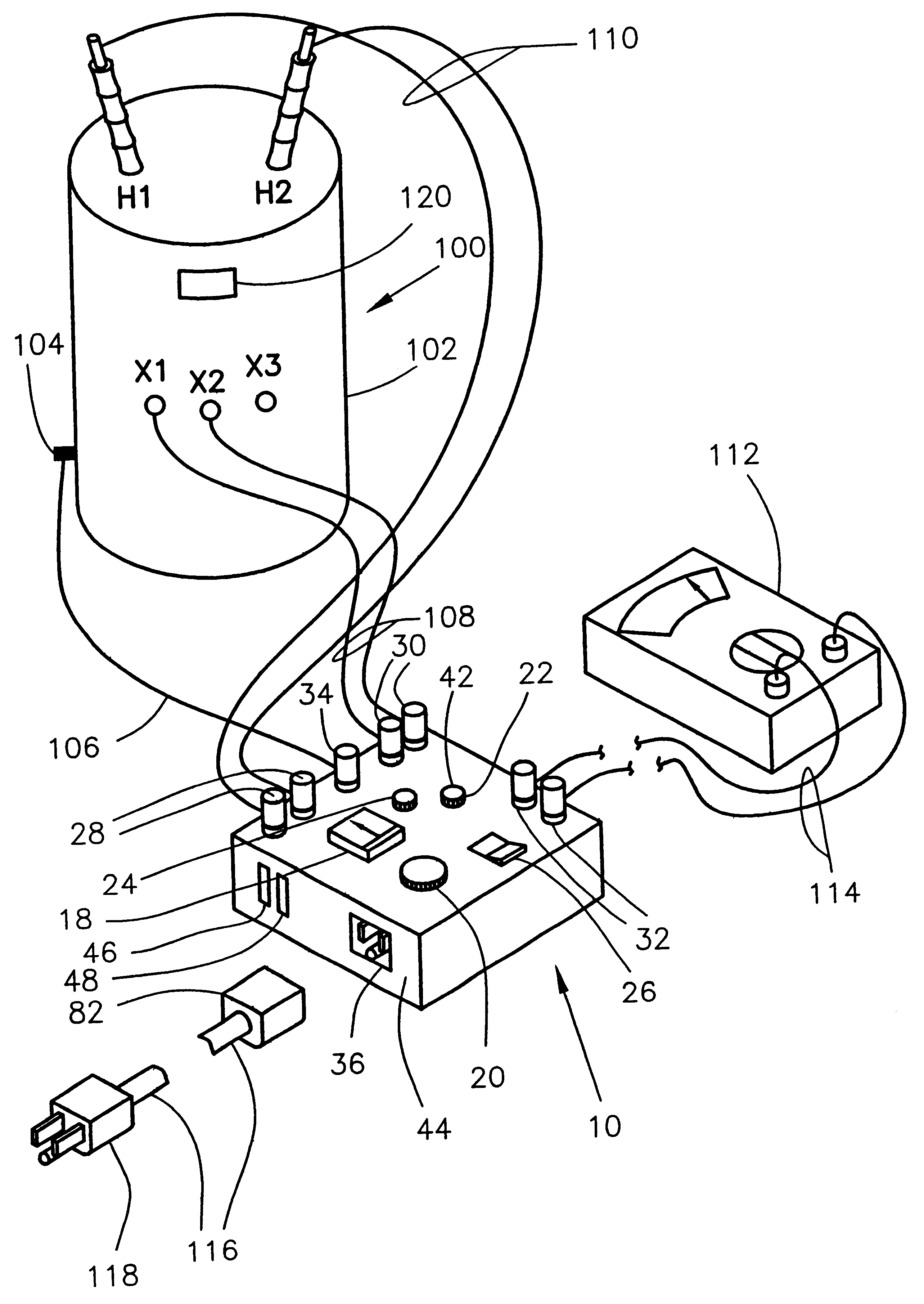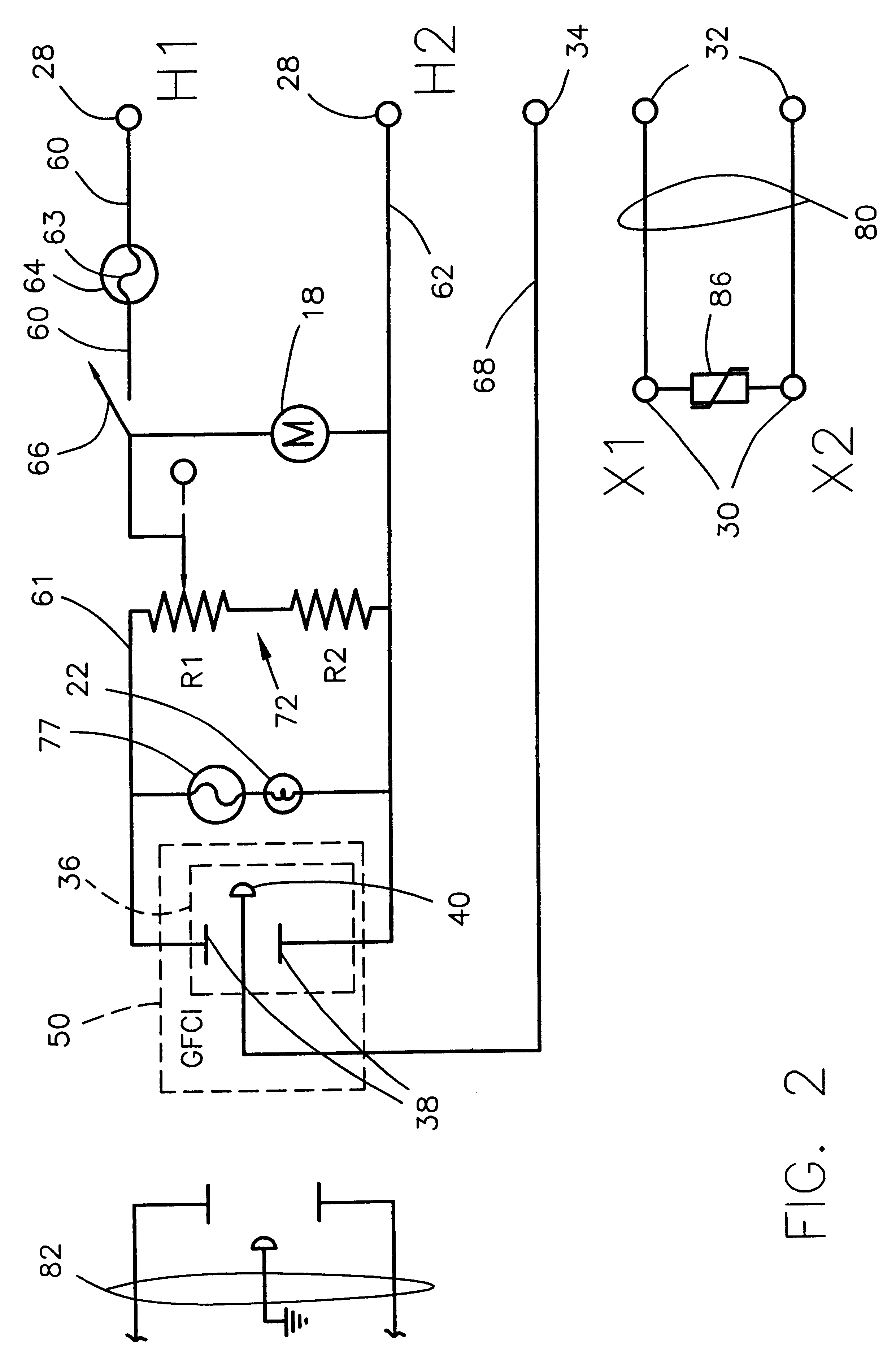Transformer test control device
a technology of transformer test and control device, which is applied in the direction of measurement device, electrical testing, instruments, etc., can solve the problems of short circuit or overheating, transformer damage, and deprived customers "downline" therefrom of electrical power and service, and achieve safe and efficient testing
- Summary
- Abstract
- Description
- Claims
- Application Information
AI Technical Summary
Benefits of technology
Problems solved by technology
Method used
Image
Examples
Embodiment Construction
AS CONTEMPLATED BY THE INVENTOR
The invention is a test control assembly 10 for testing electrical power distribution transformers of the type used to reduce or step down the power grid transmission voltage to a voltage usable by a residence or business consumer and commonly referred to as house voltage, i.e., 7200 volts or 2400 volts reduced to 120 volts and 240 volts, 277 volts or 480 volts, respectively. The stepped down or reduced output voltages are determined by the ratio of the number of turns of wire in the primary coil to the number of turns of wire in the secondary coils of the transformer.
The test control assembly typically is contained within a housing or box 12. The housing 12 encloses the circuitry illustrated in and described later with respect to FIG. 2.
The housing 12 is a box advantageously made of an insulating material such as a high dielectric plastic. Disposed on one of the largest sides 16 of the box 12, is a voltmeter 18 of conventional design and having a pref...
PUM
 Login to View More
Login to View More Abstract
Description
Claims
Application Information
 Login to View More
Login to View More - R&D
- Intellectual Property
- Life Sciences
- Materials
- Tech Scout
- Unparalleled Data Quality
- Higher Quality Content
- 60% Fewer Hallucinations
Browse by: Latest US Patents, China's latest patents, Technical Efficacy Thesaurus, Application Domain, Technology Topic, Popular Technical Reports.
© 2025 PatSnap. All rights reserved.Legal|Privacy policy|Modern Slavery Act Transparency Statement|Sitemap|About US| Contact US: help@patsnap.com



